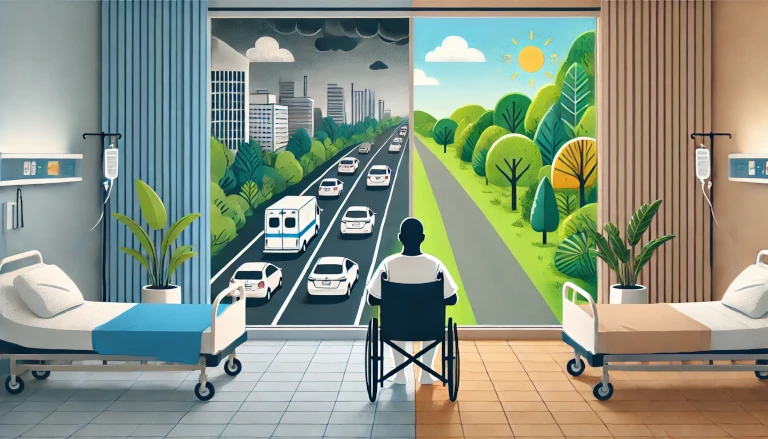The Happiness Curriculum is an innovative educational program introduced with the aim of fostering emotional well-being, mindfulness, and mental health in students. Initially launched in 2018 in Delhi, India, this curriculum seeks to move beyond academic learning, focusing on the holistic development of students by nurturing emotional intelligence, self-awareness, and empathy.
But what exactly is the Happiness Curriculum, and why is it gaining attention? This guide explores the key aspects of the curriculum, its benefits, and its broader impact on student well-being and overall happiness.
What is the Happiness Curriculum? 📘
The Happiness Curriculum is an initiative designed to integrate emotional and mental well-being into the educational system. It is currently implemented in over 1,000 schools in India, particularly within the Delhi public school system. Aimed at students from kindergarten to grade 8, the program focuses on:
- Mindfulness Practices: Helping students center their thoughts and calm their minds through meditation and breathing exercises.
- Self-Awareness and Emotional Intelligence: Encouraging students to understand and express their emotions, manage stress, and build resilience.
- Empathy and Compassion: Instilling values like kindness, empathy, and cooperation through storytelling, role-playing, and group discussions.
- Stress Management: Teaching students techniques to cope with academic and social pressures effectively.
Why Was the Happiness Curriculum Introduced? 🤔
The modern education system often prioritizes academic achievements over emotional growth, leaving students with little room to explore their inner well-being. Stress, anxiety, and competition have taken a toll on students’ mental health, leading to rising cases of depression and burnout. The Happiness Curriculum was introduced to address these challenges, aiming to:
- Reduce Academic Pressure: By focusing on happiness and well-being, the curriculum alleviates the stress of grades and exams.
- Promote Emotional Well-Being: It encourages students to recognize and express their feelings in a supportive environment.
- Build Positive Relationships: The curriculum fosters empathy, allowing students to better understand their peers and build stronger social bonds.
- Prepare Students for Life: Beyond academic knowledge, the Happiness Curriculum equips students with life skills that will help them navigate challenges and uncertainties in the real world.
Key Components of the Happiness Curriculum 🛠️
- Mindfulness and Meditation:
Each day begins with mindfulness exercises, including meditation and deep breathing, to help students relax and focus. - Value Education:
Students participate in activities that promote positive values like empathy, respect, and cooperation, helping them grow into compassionate individuals. - Storytelling and Group Activities:
Teachers use storytelling, role-playing, and group discussions to help students explore different emotions, handle conflicts, and practice kindness. - Self-Reflection:
The curriculum encourages students to reflect on their own emotions and behaviors, helping them build self-awareness and emotional intelligence.
Impact of the Happiness Curriculum on Students 🎓
The introduction of the Happiness Curriculum has shown promising results in promoting emotional health and well-being among students. Some of the key impacts include:
- Improved Focus and Attention: Students who engage in daily mindfulness activities report better concentration and focus during class.
- Reduced Stress and Anxiety: By practicing relaxation techniques, students have been able to manage stress better, reducing anxiety related to exams and peer pressure.
- Better Social Skills: Through empathy-building exercises, students are developing stronger interpersonal skills and building positive relationships with their peers.
- Higher Self-Confidence: The program encourages self-reflection and emotional expression, leading to improved self-esteem and confidence among students.
How is the Happiness Curriculum Implemented? 🏫
The Happiness Curriculum is integrated into the school timetable as a dedicated subject, typically taught for 35 to 40 minutes each day. It is led by trained teachers who guide students through a series of mindfulness exercises, storytelling sessions, and group discussions. The curriculum is designed to be adaptable, allowing teachers to tailor lessons to the specific needs of their students.
Advantages of the Happiness Curriculum 🌟
- Holistic Development: The curriculum focuses on emotional growth alongside academic learning, ensuring students develop as well-rounded individuals.
- Reduction in Behavioral Issues: Schools have reported a decrease in behavioral problems as students become more emotionally aware and empathetic.
- Increased Motivation: By reducing stress and focusing on well-being, students are more motivated to participate in school activities and excel in academics.
Challenges and Limitations of the Happiness Curriculum 🚧
While the Happiness Curriculum has been widely praised, it is not without its challenges. Some of the key limitations include:
- Implementation Across Schools: The success of the program depends heavily on the training and commitment of teachers. Not all schools have the resources to effectively implement the curriculum.
- Measuring Success: Emotional well-being is difficult to quantify, making it challenging to assess the program’s long-term impact on students.
The Future of the Happiness Curriculum 🔮
As the concept of emotional well-being gains global recognition, the Happiness Curriculum is expected to expand to more schools across India and internationally. Its success in fostering emotionally healthy, resilient, and compassionate students could pave the way for similar programs worldwide.
How to Introduce the Happiness Curriculum in Your School 🏫
If you’re interested in bringing the Happiness Curriculum to your school, here are some steps to consider:
- Training for Teachers: Ensure that teachers are trained in mindfulness, emotional intelligence, and how to facilitate discussions on well-being.
- Integration into Daily Routine: Introduce short mindfulness exercises at the start of each school day to help students relax and focus.
- Customize for Local Needs: Adapt the curriculum to fit the cultural and social context of your community, focusing on values that resonate with the students.
The Role of the Happiness Curriculum in Modern Education
The Happiness Curriculum represents a shift in education, recognizing the importance of emotional well-being alongside academic success. By teaching students mindfulness, empathy, and stress management, this program equips the next generation with the skills they need to lead happy, fulfilling lives. As more schools adopt similar initiatives, the Happiness Curriculum could become a model for education systems worldwide.
The Happiness Curriculum is transforming education by focusing on emotional intelligence and well-being. By fostering mindfulness, empathy, and self-awareness, this curriculum equips students with the tools they need to thrive in both academic and personal settings. 🌱
Discover more from Green Ecosystem - Renewable Energy, Agriculture, and Environmental Sustainability
Subscribe to get the latest posts sent to your email.


